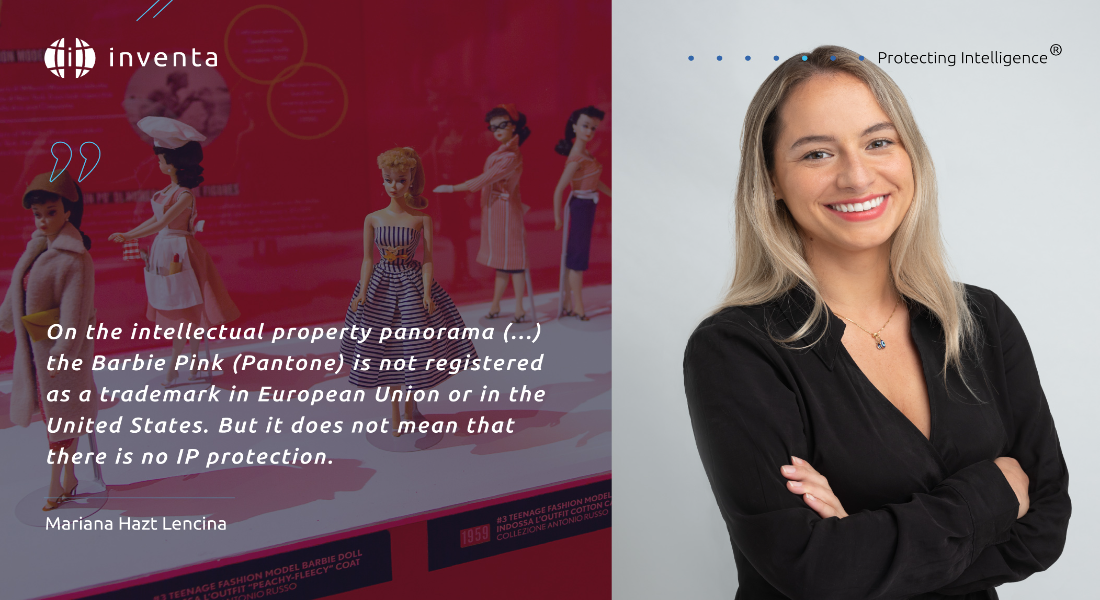
Barbie: this is not just a brand
Barbie is a trending topic, no doubt, but it's not just an example of marketing and advertising. Throughout its history, Intellectual Property has always been present. To frame historically, Ruth Handler, co-founder of Mattel, realized her daughter, Barbara, preferred her dolls to embody an adult role and appearance, unlike the standard and purely childish dolls of that time. This recognition led her to identify a potential gap in the market.
In the mid-fifties, Ruth travelled to Europe with her husband and came across a German doll named "Bild Lilli", which served as a great source of inspiration for her.
Barbie, which made its debut at the American International Toy Fair in New York on March 9, 1959., stands as the flagship product line for Mattel, one of the world's leading toy manufacturers.
Lawsuits over the years
1960
In the 1960´s, the german company, Greiner & Hausser, acused Mattel of copying the Bild-Lilli doll, a preexisting adult doll created by Reinhard Beuthien in 1955.
Moreover, Greiner & Hausser, through their managing director, obtained a patent in the United States for the "doll hip joint" used in their Bild-Lilli doll. This patent became a key point in their argument against Mattel, leading them to file a lawsuit, claiming that Mattel had unlawfully copied their doll and infringed upon their intellectual property rights.
In 1963, this dispute was concluded by Mattel acquiring Greiner & Hausser's copyright and patent rights. In this agreement, was also established that Mattel would not use the names Bild-Lilli or Lilli and Greiner & Hausser would not produce or sell dolls similar to Barbie or Bild-Lilli.
Mattel responded by filing a lawsuit in Los Angeles, in order to obtain reaffirmation to comply with the original agreement. German Court rejected the Greiner & Hausser lawsuit.
1999
But things haven't always gone smoothly for Mattel. In 1999 Mattel sued the artist Tom Forsythe for his work “Food Chain Barbie”, that used Barbie dolls as a parody to the consumption American culture. The lawsuit was dismissed, considering that parody is also protected by IP legislation.
In other words, the limits of exclusivity of Intellectual Property rights do not override the right to freedom of expression. This includes expressing oneself through the reinterpretation of existing work from a predominantly comedic, satirical, and critical perspective.
Therefore, parody, as a form of satire and social commentary, plays a role in fostering public discourse and criticism. These creative endeavors are protected under the fair use and the right to freedom of expression, as they contribute to a rich and diverse cultural landscape.
Barbie IP Guide
In recent events, sparked by the release of the movie Barbie, directed by Greta Gerwig, many cities around the world have turned pink. With mainly no images, some campaign for Barbie had just a pink banner and a date. Intuitively people recognized that it was something related to the Mattel doll. On the intellectual property panorama, in fact, the pink color, related to the Barbie Pink (Pantone) is not registered as a trademark in European Union or in the United States.
But it does not mean that there is no IP protection.
Many brands have the ability to differentiate themselves, allowing the public to automatically identify their commercial origin.
The truth is that the color “Barbie Pink” has gained distinction over the years, through its use and commercialization, giving rise to an association called “secondary meaning”. This secondary meaning occurs when a signal is initially ordinary/common and not distinctive enough to be protected as a trademark, according to legal requirements. However, over time and repeated use, it acquires such distinctiveness that the public comes to recognize it as a reference.
To be able to protect a signal, mainly with no registration, Mattel is active in avoiding dilution. As previously mentioned, a trademark is used to distinguish a company's goods or services from those of others in the marketplace. It acts as a unique identifier, helping consumers recognize and associate the brand with specific products or services. However, if a trademark is not adequately protected or sheltered, it becomes susceptible to a phenomenon known as dilution.
Dilution occurs when a trademark's distinctiveness is weakened or blurred due to its widespread use by numerous parties or in various contexts unrelated to its original goods or services. This widespread usage often leads to the trademark becoming common and losing its ability to distinctiveness and to stand out in the minds of consumers.
To prevent such dilution and safeguard their trademarks, companies, like Mattel, must actively take measures to enforce and protect their intellectual property rights. This often involves, besides registration, monitoring its usage in the marketplace, and taking legal action against unauthorized and infringing use. And that's the strategy currently used by Mattel, both for the registered marks and the colors they intend to protect.
Territory List
There are no results for your search.
- Africa
- Algeria
- Angola
- Benin
- Botswana
- Burkina Faso
- Burundi
- Cameroon
- Cape Verde
- Central African Republic
- Chad
- Comoros
- Congo (Republic)
- Côte d'Ivoire
- Democratic Republic of the Congo
- Djibouti
- Egypt
- Equatorial Guinea
- Eritrea
- Eswatini (Swaziland)
- Ethiopia
- Gabon
- Gambia
- Ghana
- Guinea
- Guinea-Bissau
- Kenya
- Lesotho
- Liberia
- Libya
- Madagascar
- Malawi
- Mali
- Mauritania
- Mauritius
- Mayotte
- Morocco
- Mozambique
- Namibia
- Niger
- Nigeria
- Réunion
- Rwanda
- Sao Tome and Principe
- Senegal
- Seychelles
- Sierra Leone
- Somalia
- South Africa
- South Sudan
- Sudan
- Tanzania (mainland)
- Togo
- Tunisia
- Uganda
- Western Sahara
- Zambia
- Zanzibar
- Zimbabwe
- Africa (OAPI)
- Africa (ARIPO)
- Other
- East Timor
- Macao
- Maldives
- Portugal
- European Patent (EPO)
- European Union Trademark (EUTM)
- International Trademark (Madrid System)
- Patent Cooperation Treaty (PCT)




